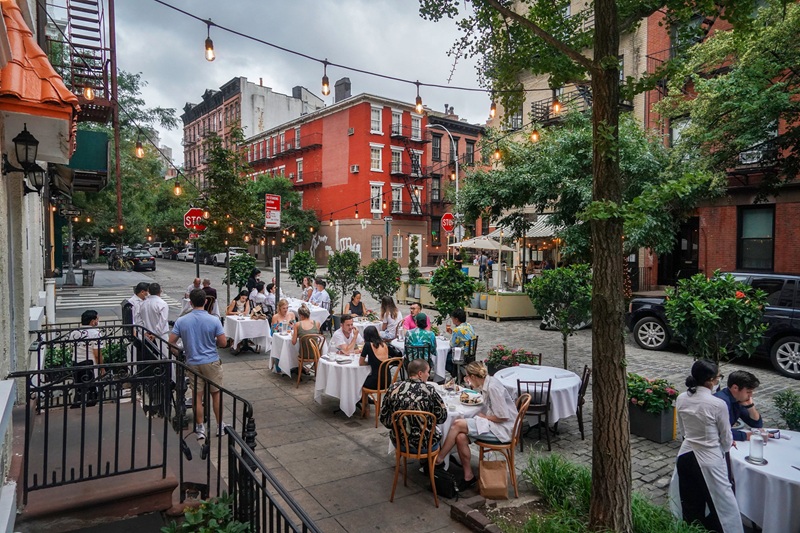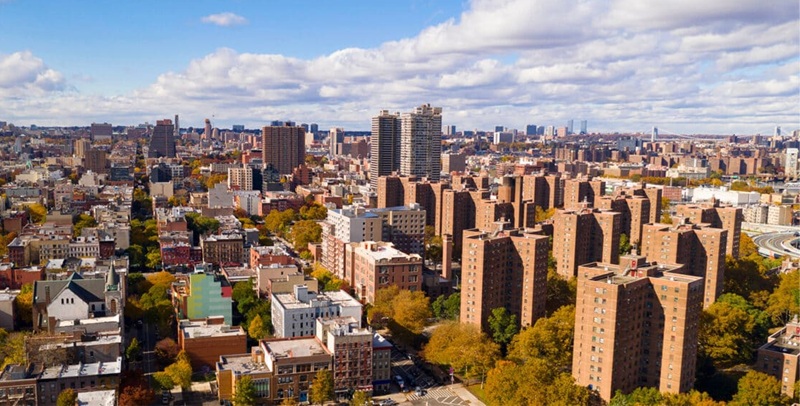
Located at the southern tip of Manhattan, the Financial District (often abbreviated as FiDi) is the nerve center of New York City‘s financial and economic activity. Known for its towering skyscrapers, iconic landmarks, and vibrant history, the Financial District has evolved from a colonial settlement into one of the world’s most important business hubs. Today, it remains a symbol of global finance, housing both historic institutions and cutting-edge enterprises.
Origins and Early Development
The Financial District’s history dates back to the early days of New York City, when it was first established as the city’s commercial hub under Dutch rule in the 1600s. The area was originally known as “New Amsterdam” and served as a center of trade, with the first stock exchange being established on Wall Street in 1792. The area’s significance grew rapidly after the American Revolution, as it became the site of the United States’ first national capital and the home of important government institutions.
Wall Street, the iconic street that runs through the Financial District, became the focal point of the city’s finance and banking industries. In the 19th century, as the U.S. economy boomed, Wall Street’s role as the heart of American finance solidified, drawing banks, investment firms, and stock traders to the area.
The Rise of Skyscrapers and Financial Institutions
By the early 20th century, the Financial District began to take on the high-rise skyline that we associate with it today. The construction of monumental skyscrapers such as the Woolworth Building (completed in 1913) marked the rise of New York as a global financial capital. The skyscraper boom continued throughout the 1920s, and by the 1930s, the Financial District had become one of the most important financial centers in the world.
Major financial institutions that still have a presence in the area today, such as JPMorgan Chase and Goldman Sachs, established their headquarters in the district, cementing its reputation as the home of American banking and investment.
The World Trade Center and the 20th Century
The Financial District’s most iconic landmark, the World Trade Center, opened in 1973. At the time, the twin towers were the tallest buildings in the world and stood as symbols of American economic power and global influence. The World Trade Center was a hub of international business, housing multinational corporations and financial firms from around the world.
However, the tragic events of September 11, 2001, when the World Trade Center was destroyed in a terrorist attack, profoundly impacted the Financial District. The destruction of the twin towers led to significant changes in the landscape of lower Manhattan, both physically and economically. The rebuilding efforts that followed brought new energy to the district, with the construction of the One World Trade Center, also known as the Freedom Tower, which opened in 2014. Today, the new World Trade Center stands as a symbol of resilience, and its nearby memorial, the National September 11 Memorial & Museum, serves as a reminder of the events that forever altered the city.
The Financial District Today
The Financial District continues to serve as the epicenter of the world’s financial industry. Wall Street remains home to the New York Stock Exchange (NYSE), where stocks are bought and sold, and major global investment banks, insurance companies, and law firms are headquartered in the area. FiDi is still the heartbeat of American finance, with its influence extending far beyond the borders of the United States.
In recent years, the Financial District has seen a shift in its demographic composition. While it remains a central business district, it has become an increasingly popular residential area, especially for young professionals and families. The district offers luxury condos, waterfront apartments, and a variety of restaurants, cafes, and retail shops. The development of nearby neighborhoods, such as Battery Park City, has also contributed to the area’s transformation into a thriving mixed-use environment.
The district’s proximity to the South Street Seaport, Battery Park, and the Brooklyn Bridge provides both residents and visitors with access to a rich array of parks, museums, and cultural institutions. The area’s streets are lined with historic buildings, such as Trinity Church and Federal Hall, which offer a glimpse into New York’s past while juxtaposing the towering glass-and-steel structures that dominate the skyline.
A Global Financial Powerhouse
As a global financial hub, the Financial District is home to a variety of industries and services, including banking, insurance, law, and real estate. Major exchanges like the NYSE, the New York Mercantile Exchange, and the NASDAQ (located just north of FiDi) are integral to global trade and financial markets. The district’s proximity to the Port of New York and its connections to global markets via air and sea make it a key player in international commerce.
New York City’s role as a financial capital is underscored by the continuous presence of global institutions, investment firms, and financial services firms in the Financial District. Major international companies, from tech to finance, maintain offices in FiDi, helping to sustain the district’s global influence.
Conclusion
The Financial District has played a pivotal role in the history of New York City and the global economy. From its origins as a colonial trading post to its current status as a world-renowned financial powerhouse, FiDi remains a symbol of economic strength, resilience, and innovation. While it has evolved over the centuries, with the destruction of the World Trade Center and subsequent revitalization, the Financial District continues to shape the city’s economic future while honoring its past. Today, it stands not just as a financial center, but as a dynamic, evolving neighborhood with a unique mix of history, commerce, culture, and modern living.

